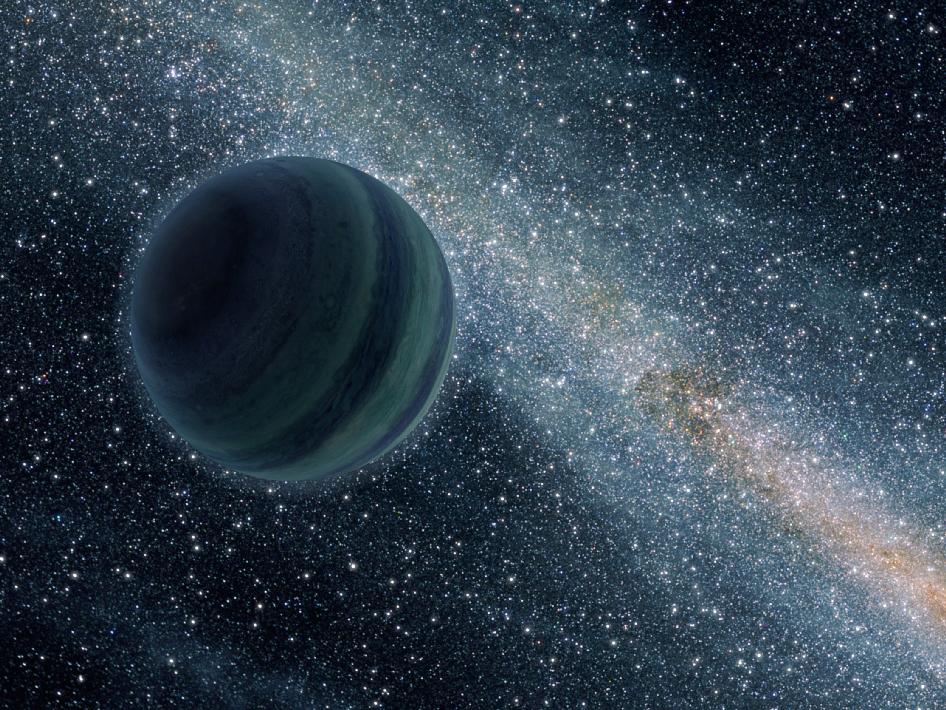Please note: The Academy will close at 3 pm today for Big Bang Gala.
Science News
Lone, Lonely Planets
May 19, 2011

Astronomers have discovered a new class of Jupiter-sized planets floating alone in the darkness of space, away from the light of a star. The research team believes these lone worlds were probably ejected from developing planetary systems. (The Guardian has a video of the process.)
Published today in the journal Nature, the discovery comes out of a survey that scanned the center of the Milky Way galaxy during 2006 and 2007, revealing evidence for up to 10 free-floating planets roughly the mass of Jupiter. The isolated orbs, also known as orphan planets, are extremely difficult to spot and had gone undetected until now. The newfound planets lie approximately 10,000 to 20,000 light-years from Earth.
The discovery indicates that many more free-floating Jupiter-mass planets exist that can't be seen. The team estimates there about twice as many free-floating Jupiter-sized planets exist as stars—making them at least as common as planets that orbit stars! This would add up to hundreds of billions of lone planets in our Milky Way galaxy alone.
“Although free-floating planets have been predicted, they finally have been detected, holding major implications for planetary formation and evolution models,” said Mario Perez, exoplanet program scientist at NASA Headquarters in Washington.
The survey, the Microlensing Observations in Astrophysics (MOA), regularly scans the copious stars at the center of our galaxy for gravitational microlensing events. These events occur when something, such as a star or planet, passes in front of another, more distant star. The passing body’s gravity warps the light of the background star, causing it to magnify and brighten. Heftier passing bodies, such as massive stars, will warp the light of the background star to a greater extent, resulting in brightening events that can last for weeks. Small planet-size bodies will cause less of a distortion, and brighten a star for only a few days or less.
The survey cannot detect planets smaller than Jupiter and Saturn, but theories suggest lower-mass planets the size of Earth could be ejected from their stars more frequently than heavier planets. As a result, free-floating Earths could be more common than free-floating Jupiters.
The New York Times wonders
Why call these things planets rather than small failed stars, like the slightly more massive brown dwarfs? Dr. [David] Bennett [of Notre Dame] said there are simply too many of them, even when nature’s propensity to make more and more smaller objects is taken into account. “We suspect they formed like planets,” he said, explaining that they were once part of primordial protoplanetary disks.
Perhaps we Earthlings should appreciate our good fortunate in not getting ejected from our solar system early on! Far better to enjoy the warmth of our sun than to float freely through the Milky Way.
Image credit: NASA/JPL-Caltech